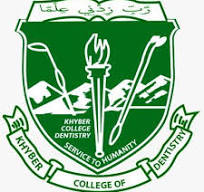REASONS OF REPLACING MISSING SINGLE TOOTH IN PATIENTS, REPORTING TO KHYBER COLLEGE OF DENTISTRY, PESHAWAR
DOI:
https://doi.org/10.33279/jkcd.v7i3.542Keywords:
Missing tooth, Function of teeth, Reason for replacement, Prosthodontics treatmentAbstract
Objective:To determine the reason for replacing the single missing tooth in patients reporting to Khyber College of Dentistry, Peshawar, and to determine the effect of gender and educational level on the reason for replacing the single missing tooth.
Materials and Methods: A detailed history and examination 100 patients having a single missing tooth from anterior incisors to the second molars were included in the study through consecutive sampling from April 2014 to 15th Sep 2014 in Khyber College of Dentistry. Patients who had more than one missing tooth already replaced a tooth and those who did not wish to replace it were excluded from the study. Age, gender, educational level, and the reason for replacement of missing tooth was recorded. It was a cross-sectional study with simple random technique. Study duration was six months. Chi-square test was applied to relate reasons for repacement of missing tooth among genders, age groups, and educational levels.
Results:Males were 61(61%), and females were 39(39%). The mean age was 30.3±12.27 years. The most common missing toot h was premolar (40%), molar(30%) and incisor(25%) in the mouth. The commonest concern among the patients having a single missing tooth to be replaced was a function(47 (47%) and aesthetics(20 (20%). Fifteen percent patients have the concept that there should be a full complement of teeth. To attract other as the reason for replacement was found in 8% patients. In this sample, 10% patients reported that if not replace there will be some adverse sequelae leading to malocclusion.
Conclusion: The commonest concern among the patients having a single missing tooth to be replaced was function followed by esthetics. Females were more concerned about esthetics to replace missing tooth while males were more interested in function and to have a full complement of teeth and occlusion maintenance.
Downloads
Published
How to Cite
Issue
Section
License
Copyright (c) 2017 Muhammad Irfan, Sajid Ali, Mohammad Waqar Hussain

This work is licensed under a Creative Commons Attribution-NonCommercial-NoDerivatives 4.0 International License.
You are free to:
- Share — copy and redistribute the material in any medium or format
- Adapt — remix, transform, and build upon the material
- The licensor cannot revoke these freedoms as long as you follow the license terms.
Under the following terms:
- Attribution — You must give appropriate credit , provide a link to the license, and indicate if changes were made . You may do so in any reasonable manner, but not in any way that suggests the licensor endorses you or your use.
- NonCommercial — You may not use the material for commercial purposes .
- No additional restrictions — You may not apply legal terms or technological measures that legally restrict others from doing anything the license permits.









